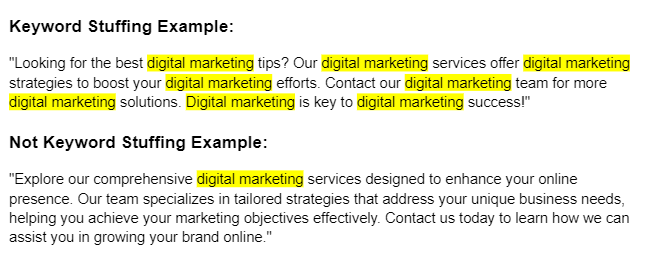Why SEO is Essential for Bloggers
Are you working at a company with a blog like ours? Or just looking to start your own blog? Starting a blog can be exciting, but it’s not enough to just write great content. To make sure your blog reaches audience you want it to, you need to understand and implement SEO, or Search Engine Optimization. SEO helps your blog posts rank higher in search engine results, making it easier for people to find and read them. We do a lot of blogging at Fishtank and I’d love to share the basics of SEO and how you can use it to boost your blog’s visibility.
What is SEO?
SEO stands for Search Engine Optimization. It involves strategies and techniques aimed at improving your blog’s visibility on search engines like Google. When your blog ranks higher in search results, it’s more likely to attract organic traffic, these are visitors who find your blog through search engines rather than direct links or advertisements. Paid ads can be expensive, by learning about SEO and utilizing it to find organic traffic you can bring traffic in without the need for a lot of monetary investment.
Key Components of SEO
Keyword Research
Keywords are the terms people use when searching for information online. Effective SEO starts with keyword research. By identifying and using the right keywords, you can ensure your content matches what your audience is looking for. Tools like Google Keyword Planner, and Ahrefs can help you find relevant keywords for the audience you are trying to attract.
To begin with keyword research:
- Brainstorm Topics: Think about the main topics your blog covers.
- Find Keywords: Use keyword tools to discover what people are searching for related to those topics.
- Analyze Competition: Check out other blogs ranking for those keywords to understand what they’re doing right.
- Choose Wisely: Pick a mix of high-traffic and long-tail keywords (specific phrases) that you can realistically rank for.
Quality Content
Content is one of the top drivers of traffic in the world of SEO. Search engines prioritize high-quality, relevant content. This means your blog posts should be well-written, informative, and valuable to your readers. Aim to answer questions, solve problems, and provide insights that your audience can’t easily find elsewhere.
Here are some tips for creating quality content:
- Be Original: Offer your unique perspective or insights.
- Stay Relevant: Write about topics that matter to your audience.
- Use Visuals: Include images, infographics, or videos to make your posts more engaging.
- Update Regularly: Keep your content fresh and up-to-date.
On-Page SEO
On-page SEO refers to optimizing individual pages of your blog. This includes:
| Term | Description | Example |
|---|---|---|
| Title Tags | Title tags are HTML elements that define the title of a web page. They appear in search engine results as the clickable headline and should be descriptive, include your primary keyword, and be compelling to encourage clicks. | "The Basics of SEO in Blogging" (keyword: SEO, Blogging) |
| Headings | Headings are used to structure your content and make it more readable. They range from H1 (main title) to H6 (subsections) and help both readers and search engines understand the hierarchy and main points of your content. | If you go up and re-scroll through this blog you’ll notice the structure: H1: The Basics of SEO in Blogging H2: Why SEO is Essential for Bloggers H2: What is SEO? H2: Key Components of SEO H3: Keyword Research etc. |
| Meta Descriptions | Meta descriptions are brief summaries of your web page's content that appear below the title tag in search engine results. They should include your keywords and be persuasive to entice users to click on your link. | The meta description of this blog is: Learn the basics of SEO in blogging. Discover key strategies like keyword research, on-page and technical SEO to boost your blog’s visibility and engagement |
| URL Structure | URL structure refers to how the addresses of your web pages are organized. Clean, concise URLs that include relevant keywords are easier for users to remember and search engines to index, improving your SEO. | You’ll see the URL of this blog is “/basics-of-seo-in-blogging” |
| Internal Linking | Internal linking involves linking to other pages within your own website. This helps users navigate your site, spreads link equity, and aids search engines in understanding your site’s structure and the relationship between pages. | You’ll see at the bottom of this page there is a “Related Articles” that links to other blogs on our site. This is internal linking |
Technical SEO
Technical SEO involves optimizing the backend of your blog. This includes:
| Term | Description | What to Do |
|---|---|---|
| Site Speed | Site speed refers to how quickly your web pages load and display content to users. Faster loading times improve user experience and can positively impact your search engine rankings. | Use tools like Google PageSpeed Insights. |
| Mobile Adaptivity | Mobile adaptivity means ensuring your blog is responsive and functions well on mobile devices. This involves optimizing the design and layout so that it looks good and is easy to navigate on smartphones and tablets. | View your site on different devices to ensure a good experience. |
| Secure Sockets Layer (SSL) | Secure Sockets Layer (SSL) is a security protocol that encrypts data transmitted between a user's browser and your website. Having an SSL certificate ensures your site uses HTTPS, which is preferred by search engines and provides a secure connection for visitors. | Obtain and install an SSL certificate for your site. |
| XML Sitemap | An XML Sitemap is a file that lists all the pages on your website. It helps search engines understand your site’s structure and find all your content, making it easier for them to crawl and index your pages efficiently. | Use plugins or tools like XML Sitemap Generator to create an XML sitemap. |
| Robots.txt | This file tells search engines which pages to crawl and which to avoid. Make sure your robots.txt file is correctly configured to prevent indexing issues. | Create and check your robots.txt file to guide search engines effectively. |
Off-Page SEO
Off-page SEO is actions taken outside of your blog to improve its ranking. This involves building backlinks, these are links from other reputable websites to your blog. Backlinks act as endorsements, signaling to search engines that your content is trustworthy and valuable. You can earn backlinks by guest posting, participating in forums, and collaborating with other bloggers. Or this can also refer to ad campaigns, and any other method you use off your website to bring in traffic.
Common SEO Mistakes to Avoid
Keyword Stuffing
While it’s important to use keywords, overusing them can harm your SEO efforts. Keyword stuffing makes your content look like it's just spam and can lead to penalties from search engines. Focus on using keywords naturally and in context. You can see a big difference below on the readability when you do and don’t keyword stuff.

Neglecting Analytics
SEO requires ongoing monitoring and adjustment. Use tools like Google Analytics to track your blog’s performance and gain insights into what’s working and what’s not. Regularly reviewing your analytics can help you make informed decisions to improve your SEO strategy. A great set of tools for this are Google Analytics 4 and Google Search Console.
Ignoring User Experience
A positive user experience is crucial for SEO. Ensure your blog is easy to navigate, visually appealing, and free of intrusive ads. A good user experience can reduce bounce rates and encourage visitors to spend more time on your site.
Getting Started with SEO
Implementing SEO can seem overwhelming at first, but starting with the basics can make a big difference. Focus on creating high-quality content, optimizing your on-page elements, and building a few good backlinks. Over time, as you become more comfortable with SEO, you can delve into more advanced techniques and strategies.
Building a Strong SEO Foundation
Understanding and implementing the basics of SEO is essential for any blogger looking to grow their audience. By optimizing your content for search engines, you can increase your blog’s visibility, attract more readers, and build a loyal following. Remember, SEO is an ongoing process, so stay updated with the latest trends and continue refining your strategy. Happy blogging!




